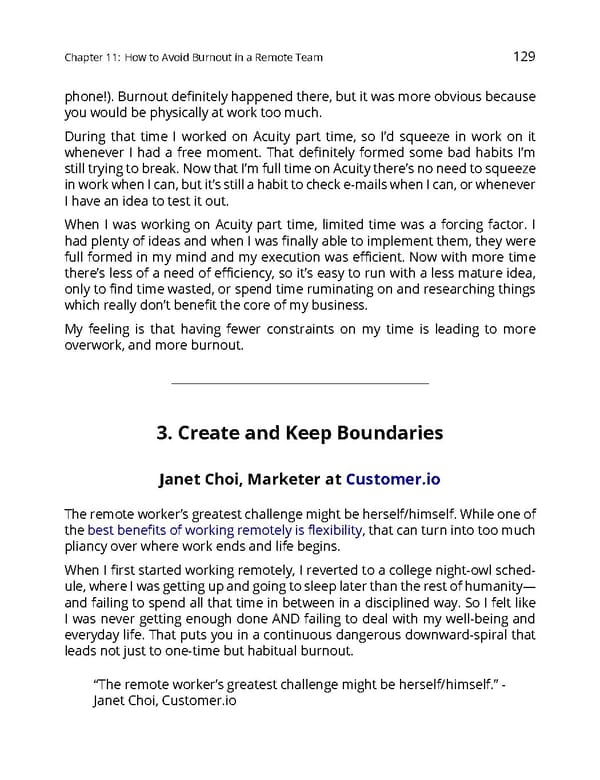Chapter11: HowtoAvoidBurnoutinaRemoteTeam 129 phone!). Burnout definitely happened there, but it was more obvious because youwouldbephysicallyatworktoomuch. During that time I worked on Acuity part time, so I’d squeeze in work on it whenever I had a free moment. That definitely formed some bad habits I’m still trying to break. Now that I’m full time on Acuity there’s no need to squeeze inworkwhenIcan,butit’sstillahabittochecke-mailswhenIcan,orwhenever I have an idea to test it out. When I was working on Acuity part time, limited time was a forcing factor. I hadplentyofideasandwhenIwasfinallyabletoimplementthem,theywere full formed in my mind and my execution was efficient. Now with more time there’s less of a need of efficiency, so it’s easy to run with a less mature idea, only to find time wasted, or spend time ruminating on and researching things whichreally don’t benefit the core of my business. My feeling is that having fewer constraints on my time is leading to more overwork, and moreburnout. 3. Create and Keep Boundaries JanetChoi,MarketeratCustomer.io Theremoteworker’sgreatestchallengemightbeherself/himself.Whileoneof the best benefits of working remotely is flexibility, that can turn into too much pliancy over where work ends and life begins. WhenIfirst started working remotely, I reverted to a college night-owl sched- ule, whereIwasgettingupandgoingtosleeplaterthantherestofhumanity— andfailing to spend all that time in between in a disciplined way. So I felt like I was never getting enough done AND failing to deal with my well-being and everyday life. That puts you in a continuous dangerous downward-spiral that leads not just to one-time but habitual burnout. “The remote worker’s greatest challenge might be herself/himself.” - Janet Choi, Customer.io
 The Ultimate Guide to Remote Work Page 132 Page 134
The Ultimate Guide to Remote Work Page 132 Page 134